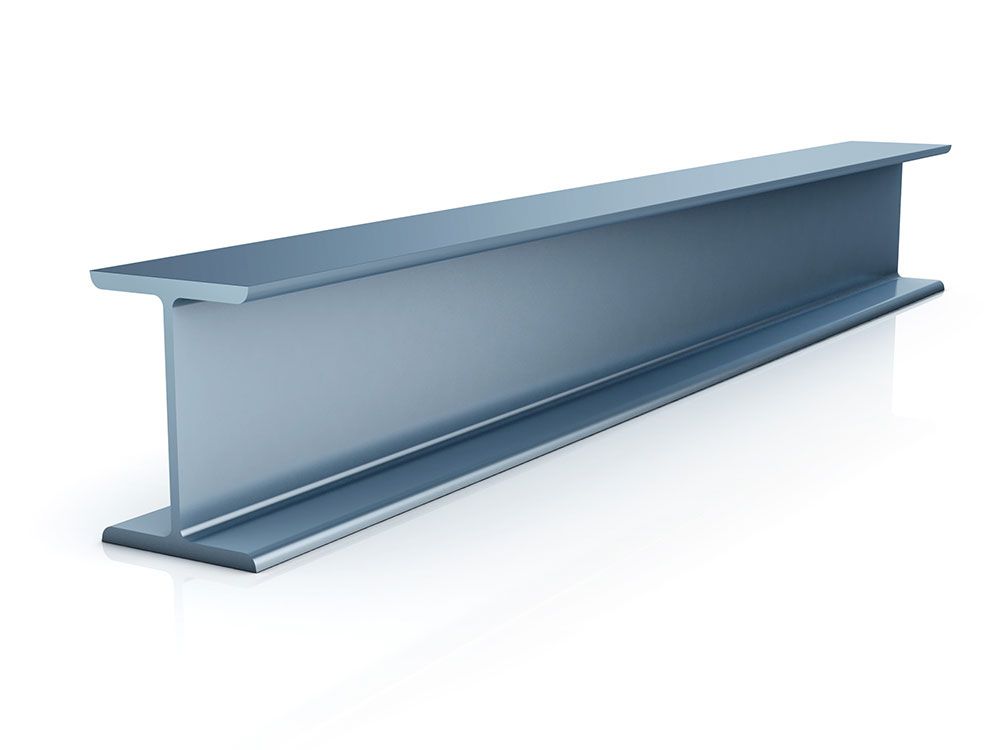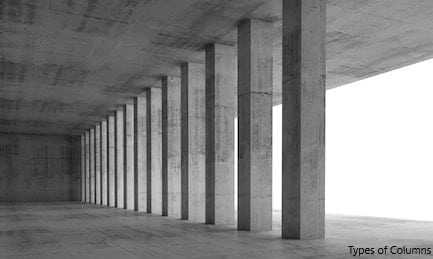Depending on the strain of the section, categorization of the sections is done as a balance section, over the reinforced section, and under the reinforced section.
The section has certain areas of reinforcement that are checked with strain development due to the applied loads. In another word, we are checking the capacity of the section by taking into account the reinforcement stress and the concrete stress.
Before move into the main topic, let see how the stress development in the section that is subjected to bending stress.
The following figure, obtained from the Book, Reinforced Concrete Structures by Park and Paulay, indicates the stress and strain development of a section.
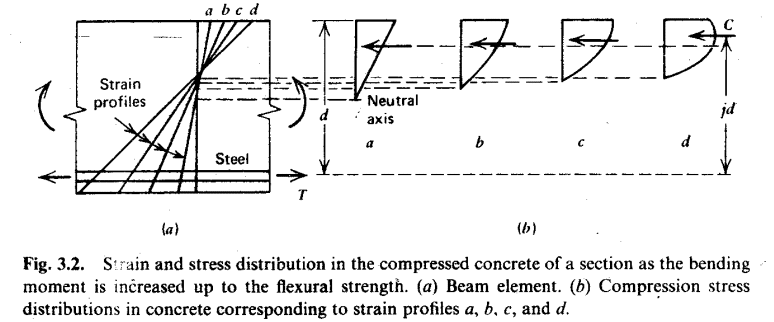
The stress in the concrete increases gradually with the increase of bending moment in the section. Ultimately it reaches it maximum capacity that it can bear with the increase of the steel strain too.
The following figure indicates the idealized compress stress block in compression[obtained from the same book].
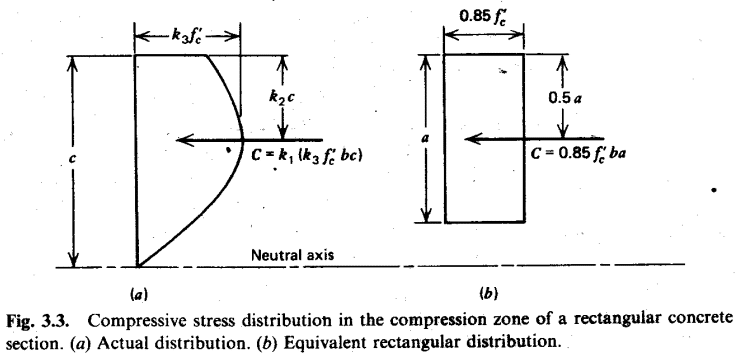
Similarly, the reinforced stress variation also can be plotted.
Now let’s see what are the balance, over reinforced, under reinforced section.
Let’s start with the balance section.
Now calculate the strain development of the concrete section according to British Standards.
Balance Section
In the balance condition, the strain of the concrete and steel reaches its maximum value.
The following calculation can be done to find the neutral axis depth (x) to effective depth (d) ratio. A singly reinforced section is considered in this calculation.
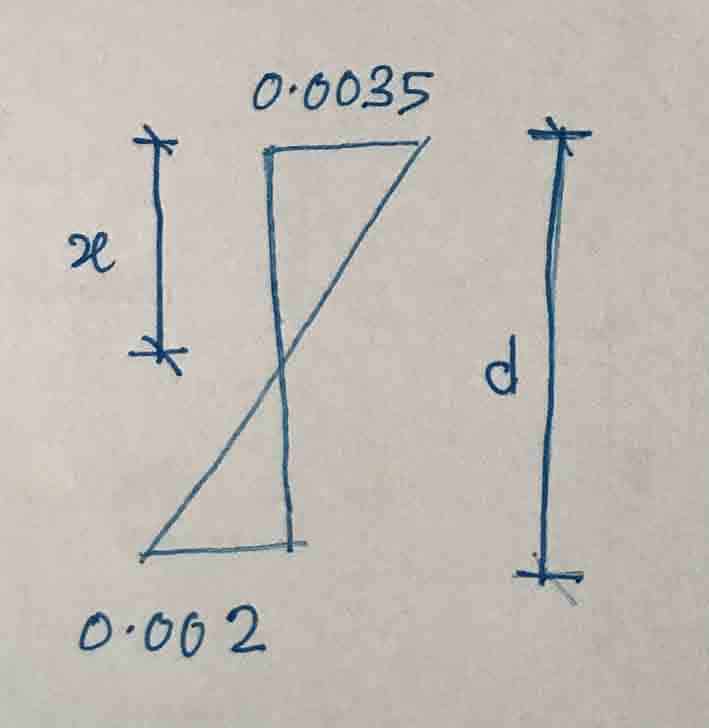
From strain diagram
x / (d-x) = 0.035 / 0.002
x / d = 0.636
Thus, if the section reaches x/d = 0.636, we say that section is a balance condition. Beyond this condition, the section will fail with the increase of the strain.
It says the balance failure.
Let’s see the other two types of possibility under reinforced section and over reinforced section. Different modes of failure can be illustrated as follows.
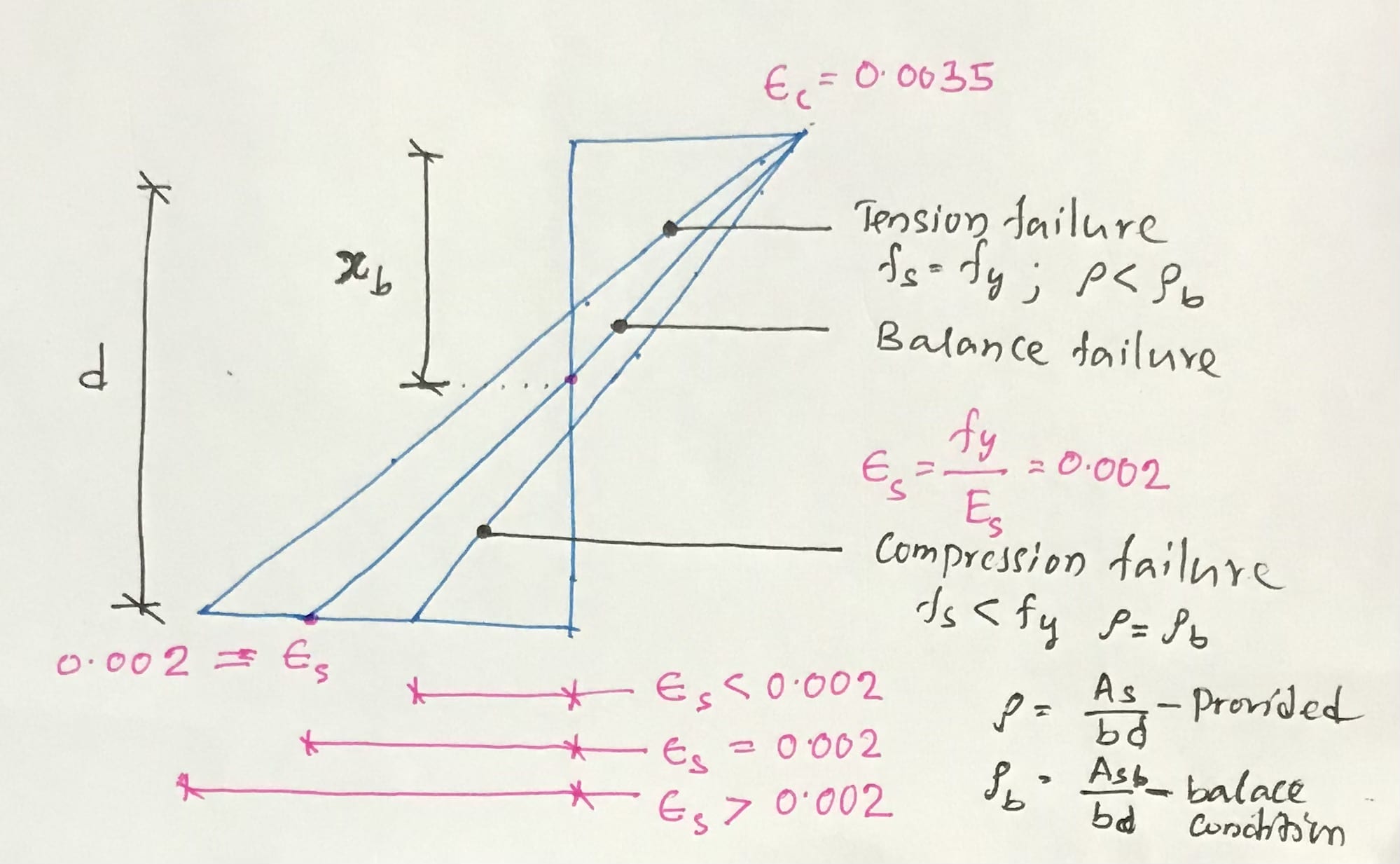
Under Reinforced Section
As indicated in the above figure, a section subjected to tension failure can be identified as under the reinforced section.
At the balance condition, steel reaches its yielding point where the strain is 0.002 and concrete strain 0.035. With the increase of the strain further, steel strain reaches its maximum values leading to reinforcement failure in tension.
Failure of section due to the failure of reinforcement with the inadequacy of reinforcement is called the failure of an under-reinforced condition.
The maximum steel stress is called the tensile stress of the reinforcement. You may read the article Tensile Strength of Rebar for further information on this type of failure.
In addition, the simplified stress-strain diagram is considered in the design.
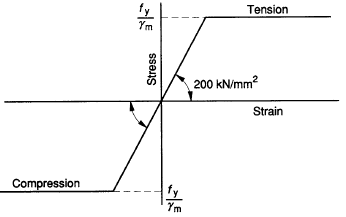
As indicated in the stress-strain diagram (BS 8110) steel reaches its maximum stress fy/γm (=460/1.15 = 400; for tor steel, as per BS 8110-1985). Thereafter, strain increases without increasing the stress.
However, the actual stress of the rebar increase as discussed in the article Tensile Strength of Rebar.
When reinforcement reaches tensile strength and concrete strain is 0.0035 or less, the section is failed in tension in the under-reinforced condition.
More importantly, section fails under reinforced conditions provide considerable warnings before the failure. Cracking of the elements, excessive deflections, etc. is useful to understand failures of this nature.
Over Reinforced Section
Section fail in compression is called the over-reinforced condition. This is simply a failure of the concrete.
As we know, there are no warnings when concrete fails as it is a brittle failure. Therefore, the designer shall keep in mind to avoid failures of this nature.
The following can be observed in over reinforced section
- fs < fy Rinorcement stress is less than the yield stress of reinforcements
- Reinforcement provided is less than that provided in the balanced condition.
- Reinforcement not yielding and concrete strain increase beyond 0.0035.

